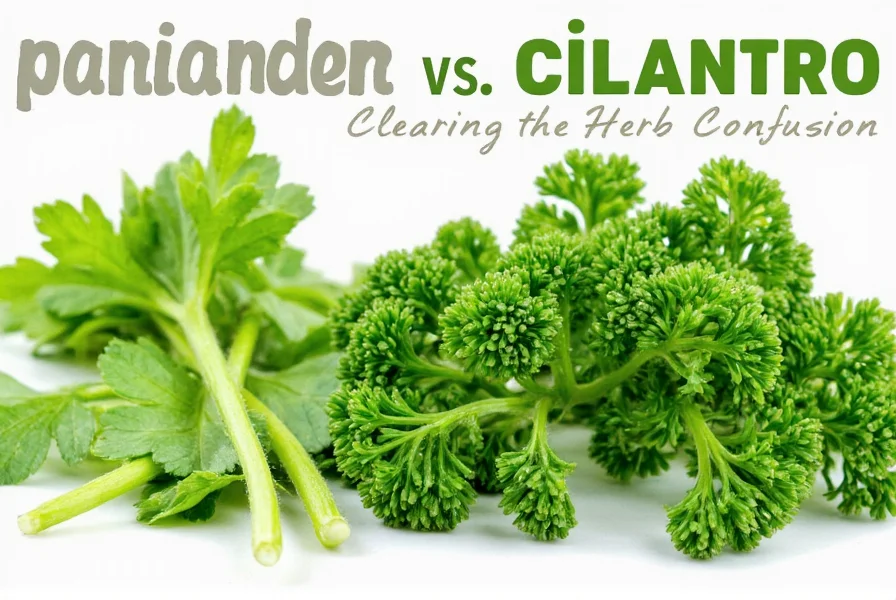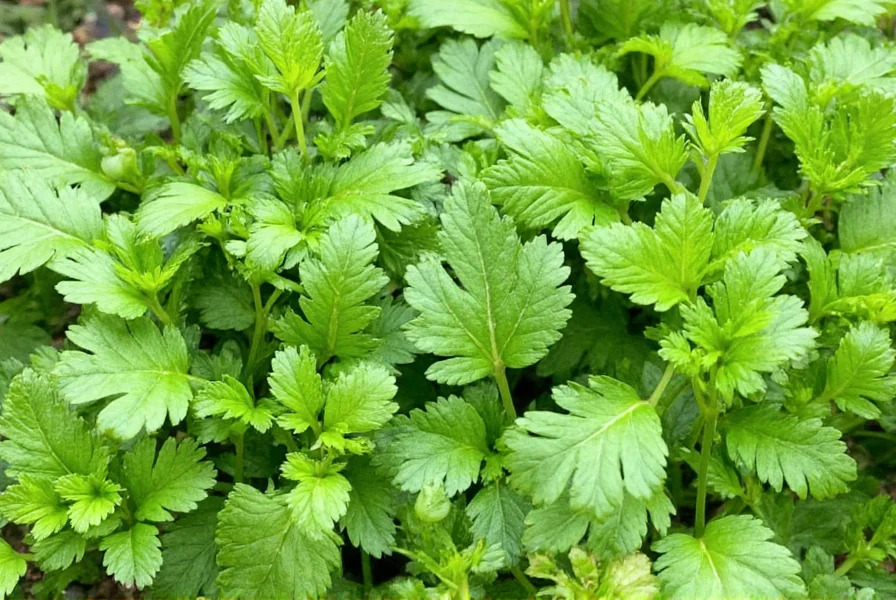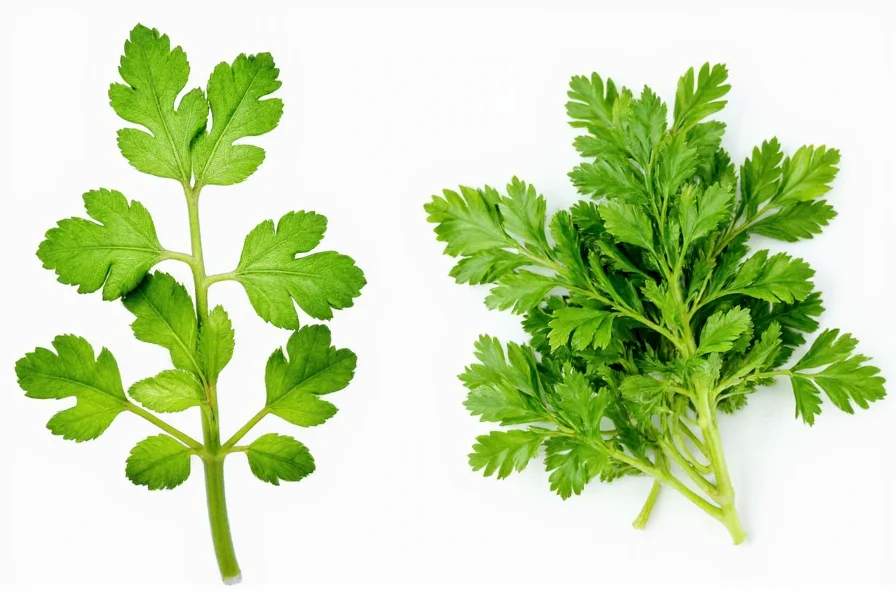Understanding the distinction between coriander, cilantro, and parsley is essential for successful cooking. Many home chefs struggle with these herbs because of confusing terminology and visual similarities. The key botanical fact is that coriander and cilantro are different parts of the same plant, while parsley belongs to a separate species entirely. This explains why substituting one for the other can dramatically alter a dish's flavor profile.
Botanical Background: Same Plant, Different Names
The confusion primarily stems from regional naming conventions. In the United States, we call the fresh leaves cilantro and the dried seeds coriander. However, in the UK, Australia, and many other English-speaking countries, the fresh leaves are called coriander while the seeds retain the name coriander seeds. This regional terminology difference causes significant confusion for cooks following international recipes.
Parsley, by contrast, remains consistently called parsley worldwide, though it comes in two main varieties: curly leaf and flat-leaf (Italian) parsley. Both are distinct from the coriander/cilantro plant.

Visual Identification Guide
Telling these herbs apart is crucial for proper usage. Here's how to identify each one:
| Herb | Leaf Shape | Stem Color | Overall Appearance |
|---|---|---|---|
| Cilantro/Coriander leaves | Delicate, lacy, rounded edges | Pale green | Feathery, almost fern-like appearance |
| Coriander seeds | N/A (seeds) | N/A (seeds) | Small, round, tan-colored seeds |
| Flat-leaf parsley | Pointed, serrated edges | Dark green | Bolder, more substantial leaves |
| Curly parsley | Tightly curled | Dark green | Frilly, decorative appearance |
Flavor Profiles Compared
The taste differences between these herbs couldn't be more distinct:
- Cilantro (fresh leaves): Bright, citrusy, with a distinctive peppery note. Some people experience a soapy taste due to genetic factors affecting their olfactory receptors.
- Coriander seeds: Warm, nutty, slightly citrusy with floral notes. When toasted, they develop deeper, almost spicy characteristics.
- Parsley: More neutral, grassy flavor. Flat-leaf has a stronger taste than curly parsley, which is primarily used as a garnish.
Understanding these flavor profiles helps explain why substituting parsley for cilantro in a salsa would create a completely different dish. The difference between fresh coriander leaves (cilantro) and coriander seeds is equally dramatic - they're essentially different ingredients despite coming from the same plant.
Culinary Applications
Each herb shines in specific culinary contexts:
Cilantro Uses
Cilantro's vibrant flavor makes it essential in:
- Mexican cuisine (salsas, guacamole, tacos)
- Asian dishes (curries, noodle salads, spring rolls)
- Middle Eastern recipes (chutneys, raitas)
Add cilantro at the end of cooking or as a fresh garnish, as heat diminishes its distinctive flavor. Many people searching for why does cilantro taste like soap are experiencing a genetic variation that affects their perception of this herb.
Coriander Seed Uses
Coriander seeds work well in:
- Curry powders and spice blends
- Marinades for meats
- Baking (particularly in European rye breads)
- Pickling recipes
For maximum flavor, toast whole coriander seeds before grinding. This transforms their flavor from mild to complex and aromatic.
Parsley Uses
Parsley serves different purposes depending on variety:
- Flat-leaf: Ideal for cooking in Mediterranean dishes, tabbouleh, and as a key ingredient in gremolata
- Curly: Primarily used as a garnish due to its milder flavor and attractive appearance
Chefs often wonder about how to tell cilantro from parsley when shopping. The key visual difference is in the leaf edges - cilantro has rounded lobes while flat-leaf parsley has pointed, serrated edges.
Substitution Guide
While no substitution is perfect, here are your best options when you're missing one of these herbs:
- No cilantro? Try fresh basil with a squeeze of lime for Mexican dishes, or flat-leaf parsley with a dash of cumin for Asian recipes. Remember that substitute for fresh cilantro won't replicate the exact flavor.
- No coriander seeds? Use cumin (use half the amount) or a combination of fennel seeds and caraway.
- No parsley? Cilantro works in some applications but will change the flavor profile significantly. For garnish, try chervil or even celery leaves.
Storage Tips for Maximum Freshness
Proper storage extends the life of these delicate herbs:
- Cilantro: Trim stems, place in a glass with water (like flowers), cover loosely with a plastic bag, and refrigerate. Change water every 2-3 days. Can also be frozen in ice cube trays with water or oil.
- Coriander seeds: Store whole seeds in an airtight container away from light and heat. They maintain potency for 6-12 months.
- Parsley: Treat similarly to cilantro - store in water in the refrigerator. Dried parsley has minimal flavor, so always use fresh when possible.

Common Questions Answered
Is coriander the same as cilantro?
Yes and no. Coriander and cilantro come from the same plant (Coriandrum sativum). Cilantro refers specifically to the fresh leaves and stems, while coriander typically refers to the dried seeds. In many countries outside the US, the fresh leaves are called coriander, which creates confusion.
Can I substitute parsley for cilantro in recipes?
You can substitute flat-leaf parsley for cilantro in a pinch, but the flavor profile will be significantly different. Parsley has a milder, grassier taste without cilantro's distinctive citrus notes. For Mexican or Asian dishes where cilantro is essential, the substitution will noticeably alter the dish's character. A better approach is to use parsley with a squeeze of lime and a pinch of cumin to approximate cilantro's flavor.
Why do some people think cilantro tastes like soap?
Approximately 21% of the population has a genetic variation that affects their olfactory receptors, causing them to perceive a soapy taste when eating cilantro. This genetic trait is linked to a cluster of olfactory-receptor genes on chromosome 11. The compounds in cilantro (aldehydes) that most people experience as citrusy are the same compounds found in soap, which explains why some people detect that unpleasant soapy flavor.
What's the difference between fresh coriander and dried coriander?
This is a common point of confusion. "Fresh coriander" typically refers to the leaves (what Americans call cilantro), while "dried coriander" refers to the seeds. They are completely different ingredients with distinct flavors and culinary uses. The leaves have a bright, citrusy flavor best used fresh, while the dried seeds have a warm, nutty flavor used as a spice.
Which is healthier: cilantro or parsley?
Both herbs offer nutritional benefits but with different strengths. Parsley contains more vitamin K and vitamin C, while cilantro provides more vitamin A. Both are low in calories and rich in antioxidants. Parsley has higher concentrations of certain flavonoids, while cilantro contains compounds that may help with heavy metal detoxification. For maximum health benefits, include both in your diet as they complement each other nutritionally.











 浙公网安备
33010002000092号
浙公网安备
33010002000092号 浙B2-20120091-4
浙B2-20120091-4